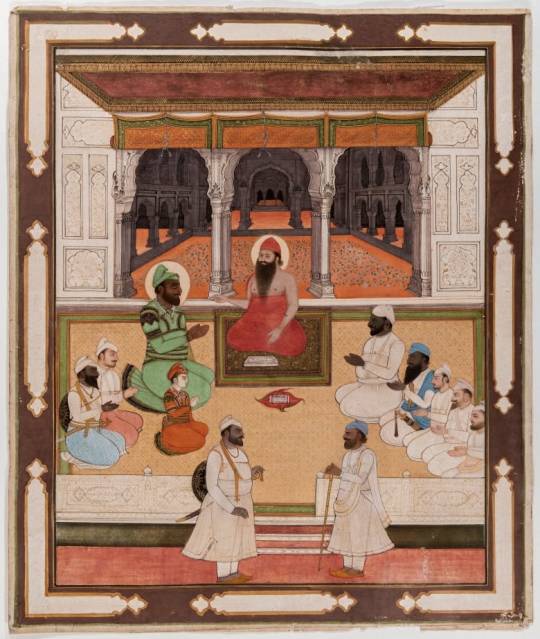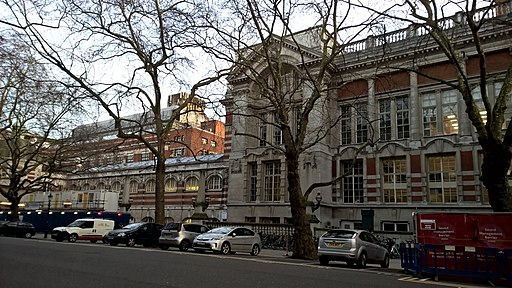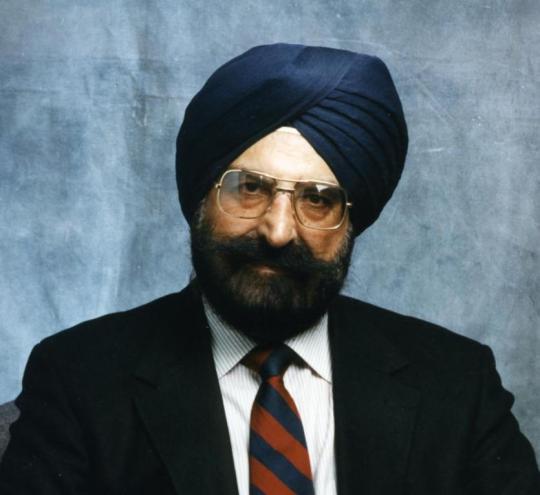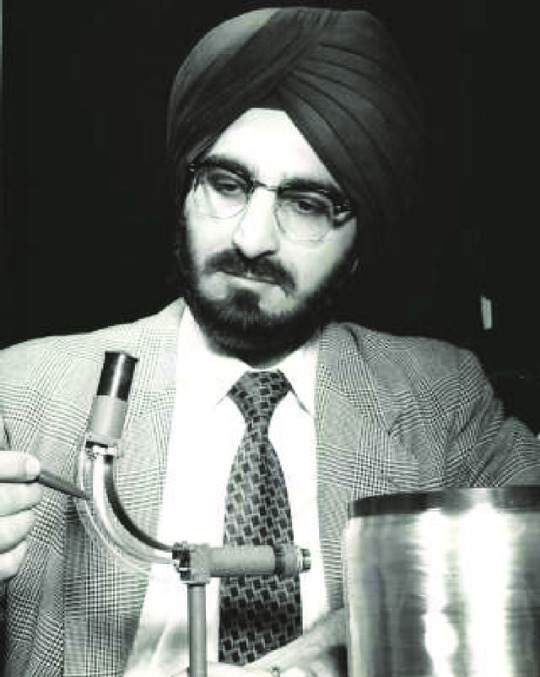#narinder singh kapany
Link
Engineers Day reminds us of the vital role of Engineers in advancing society for being problem solvers and innovators, responsible for designing, creating, and maintaining everything from infrastructure to advanced technology. Their work impacts our daily lives, providing clean water, efficient transportation, and advanced communication systems.
#role of engineers#engineers day celebrations#mechanical engineer#mechanical engineering#verghese kurien#optical engineer#narinder singh kapany#civil engineer#civil engineering#sreedharan#computer engineer#computer engineering#metro man of india#sundar pichai#aerospace engineer#aerospace engineering#apjabdul kalam#famous engineers#indian engineers#Technical Training Promotion#technical training#Contributions of Engineers#Engineering for a Sustainable Future#sustainable future#National Engineer’s Day theme#national engineer’s day#indian engineer#engineers day#sir visvesvaraya#Sir Mokshadgundam Visvesvaraya
0 notes
Video
youtube
Narinder Singh Kapany: Fiber Optics ਦਾ ਪਿਤਾ ਕਹੇ ਜਾਣ ਵਾਲੇ ਵਿਗਿਆਨੀ ਦੀਆਂ ਕਾ...
0 notes
Link
Tal día como hoy, en 1927, nace Narinder Singh Kapany , físico indio-estadounidense ampliamente reconocido como el padre de la fibra óptica. Acuñó el término fibra óptica para referirse a la tecnología que transmite luz a través de finas hebras de vidrio.
https://buff.ly/3FYf2Rv
0 notes
Video
youtube
Father of Fiber Optics Dr. Narinder Singh Kapany
0 notes
Text
Couple brings Sikh art into permanent collection at Montreal's Fine Arts Museum
Couple brings Sikh art into permanent collection at Montreal’s Fine Arts Museum
The Montreal Museum of Fine Arts (MMFA) has launched a new, permanent collection of Sikh art in its Arts of One World Wing.
Most of the items were donated from the collection of Narinder Singh Kapany, known as the father of fiber optics, with the help of Mandeep Roshi Chadha, a former museum board member who is now vice-chair of the board of trustees for the National Gallery of Canada.
“What does…

View On WordPress
0 notes
Text
Damage limitation at Imperial
Damage limitation at Imperial
The Royal College of Science building, now home to part of Imperial’s Chemistry Department
Disaster has been averted at Imperial. But much damage has been done, the group appointed to implement the decisions taken faces an impossible task, and the process has aggravated the very problem that it was meant to address.
For months, as I described elsewhere earlier, Imperial College has been…

View On WordPress
#Abdus Salam#Cancel culture#Huxley#Huxley building#Imperial College#Margaret Fishenden#Narinder Singh Kapany#Thomas Henry Huxley
1 note
·
View note
Photo

Father of fibre optics and patron of Sikh arts Narinder Singh Kapany dies at 94 https://ift.tt/3oon776
10 notes
·
View notes
Photo

Father of Fibres
Although many scientists experimented with sending light down thin fibres of glass by refracting or bending its path, it wasn’t until 1953 that a flexible bundle of around 10,000 fibres – a 'fibrescope' – carried clear images over a short distance. In perfecting these techniques, Narinder Singh Kapany – born on this day in 1926 – is regarded as the “Father of Fiber Optics". His ideas inspired the first fibre optic gastroscope, fetching images from deep inside the human body and paving the way for modern key-hole surgery. Elsewhere fibre optics is used for high-speed communication, and in engineering, allowing – just as in the human body – a window on the workings of internal structures. Professor Kapany’s work is also perhaps a reminder for young scientists to question everything – “One day the professor told us that light ‘always travels in a straight line’. But that can’t be true, I thought – it must be bent sometimes”.
Written by John Ankers
Image by Carol Foote. Center for Innovation and Entrepreneurial Development (CIED): Narinder Singh Kapany, Professor of Physics
©Regents of the University of California. Courtesy Special Collections, University Library, University of California Santa Cruz.
Carol Foote photographs of the University of California, Santa Cruz.
You can also follow BPoD on Instagram, Twitter and Facebook
#science#biomedicine#biomedical science#fibre optics#fibrescope#born on this day#key-hole surgery#laparoscopic#gastroscope#endoscopy#fiber
6 notes
·
View notes
Video
youtube
एक महान सिख की कहानी | Dr. Narinder Singh Kapany | Father of Fiber Optic...
0 notes
Link
Tal día como hoy, en 1927, nace Narinder Singh Kapany, físico indio considerado el "padre" de la fibra óptica. https://buff.ly/3SLGAND
0 notes
Photo

Narinder Singh Kapani (92 years) is acknowledged as the Father of 'Fiber optics'-a term he coined. His work in 1953 ushered in a new era of High speed Internet, endoscopy, spectroscopy etc. An unsung hero, he never patented it. He NEVER won a Nobel Prize.
0 notes
Text
Former Japan PM Shinzo Abe, S P Balasubramaniam conferred Padma Vibhushan; Tarun Gogoi, Paswan, honoured with Padma Bhushan

NEW DELHI: Former Japanese Prime Minister Shinzo Abe and late singer S P Balasubramaniam were conferred the Padma Vibhushan on Monday, while former Lok Sabha Speaker Sumitra Mahajan, late Union minister and LJP supremo Ram Vilas Paswan, former Assam chief minister Tarun Gogoi, former Gujarat chief minister Keshubhai Patel and ex-principal secretary to Prime Minister Nripendra Misra were named for the Padma Bhushan.
As many as 119 Padma awards – including 7 Padma Vibhushan, 10 Padma Bhushan and 102 Padma Shri awards – have been announced this year. Among the awardees are 29 women and one transgender; while 10 are either foreigners, NRIs, persons of Indian origin (PIO) or overseas citizens of India (OCI). Sixteen awards were conferred posthumously.
No Bharat Ratna was announced this year as well. Among the states, Tamil Nadu accounted for the highest number of Padma awards (11), followed by UP (9), Assam (8), and seven each from West Bengal and Odisha.
The Padma Vibhushan list announced on Monday includes Puri-based sculptor Sudarshan Sahoo, cardiologist and Manipal University ex-chancellor B M Hegde, Islamic scholar Maulana Wahiduddin Khan, archaeologist B B Lal who led the first excavation at Ram Janam bhoomi-Babri mosque site at Ayodhya and Indian-American Sikh physicist Narinder Singh Kapany known for his work in the field of fibre optics.
Welcoming the honour for his father, LJP chief Chirag Paswan told TOI: “It’s an extremely proud moment for the family and the party as well. It’s a very emotional moment and we are remembering and missing papa. I thank the Central government, President, Prime Minister and home minister for recognizing his effort for the weaker and downtrodden sections of the society”.
The 10 Padma Bhushan awardees this year include Tarun Gogoi, a former Congress chief minister of Assam that is due for assembly polls in April; Islamic spiritual leader Kalbe Sadiq (posthumous); former MP and ex-chairman of National Commission for Minorities Tarlochan Singh who has done great work for Sikh community; famous playback singer Krishnan Nair Shandakumar Chithra; Kannada poet and playwright Chandrashekhar Kambara; and Maharashtra-based industrialist Rajnikant Devidas Shroff.
In the Padma Shri list are former Goa governor Mridula Sinha, who passed away in November last year, and former Union minister from Assam Bijoya Chakravarty.
Among the sportspersons in the Padma Shri list are basketball player P Anitha, table tennis player Mouma Das, athelete Sudha Hari Narayan Singh, para-sportsman K Y Venkatesh, wrestler Virender Singh and mountaineer Anshu Jamsenpa.
The list, like past few years, includes many unsung heroes in fields like art, social work, agriculture and also in the new category – grassroots innovation.
From the field of trade and industry, Punjab-based Cremica founder Rajni Bector, late P Subramanian of Shanthi Gears based in Coimbatore who was also a philanthropist, and Zoho Corporation CEO Sridhar Vembu have been conferred Padma Shri. Father Valles, Spanish-born Jesuit priest settled in Gujarat who wrote in Gujarati and on mathematics and Greek Indologist Nicholas Kazanas were awarded Padma Shri in the ‘literature and education’ category, the former posthumously. Another foreigner in the Padma Shri list is British playwright Peter Brook, who popularised ‘Mahabharata’ abroad by adapting it into a play and subsequently, a film.
‘Dom Raja’ of Varanasi Jagdish Chaudhary, who had signed Prime Minister Narendra Modi’s nomination papers in 2019 LS poll, was also awarded Padma Shri for social work posthumously.
Jitender Singh ‘Shunty’, another Sikh Padma awardee, was elected as the MLA from Shahdara from BJP in 2013. He is the founder of Shaheed Bhagat Singh Seva Dal, an NGO that helps to cremate unclaimed bodies and immerse the ashes as guided by the Hindu and Sikh religion.
The famous ‘Two Rupee Doctor’ Thiruvengadam Veeraraghavan, who served quietly the underprivileged in North Chennai for more than four decades, has also received the Padma Shri (posthumously). The former MBBS had become so popular that other doctors in the neighbourhood got together and protested, demanding he take at least Rs 100 as consultation fee.
The list also includes Nanadro B Marak from Meghalaya’s West Garo hills, who is known as one of the best organic black pepper grower.
Ali Manikfan, an Indian marine researcher, ecologist, shipbuilder, and a polyglot has also received Padma Shri for his autodidactic research skills in the marine, ecology, and agricultural fields without holding any formal educational qualification.
Chutni Devi from Jharkhand, who has helped hundreds of victims who were accused of witch practice, has been awarded with Padma Shri. She was once expelled from her village for alleged witch practice.
Late Dr Jitendra Nath Pande has been awarded with Padma Shri (posthumously) was an Indian pulmonologist and professor and head of medicine at the All India Institute of Medical Studies.
source https://bbcbreakingnews.com/2021/01/25/former-japan-pm-shinzo-abe-s-p-balasubramaniam-conferred-padma-vibhushan-tarun-gogoi-paswan-honoured-with-padma-bhushan/
0 notes
Text
Narinder S. Kapany, ‘Father of Fiber Optics,’ Dies at 94

Narinder Singh Kapany was born on Oct. 31, 1926, in Moga, a town in Punjab, in northwest India, and raised in Dehradun, about 200 miles to the east. His father, Sundar Singh Kapany, worked in the coal industry; his mother, Kundan Kaur Kapany, was a homemaker. After graduating from Agra University (now Dr. Bhimrao Ambedkar University), he worked for a government munitions factory in Dehradun before moving to England.
Despite his love for research, Dr. Kapany had never planned on becoming an academic scientist. He had originally moved to Britain for an internship at an optics firm in Scotland, to learn skills he could use in starting his own company back in India. But the opportunity to work with Professor Hopkins, a towering figure in the world of optics, was too tempting to resist.
Their relationship, however, though fruitful, proved unstable: Both were physically imposing men with outsize personalities, and they fell out soon after publishing their seminal paper in Nature. Professor Hopkins accused Dr. Kapany of overstating his contribution; Dr. Kapany retorted that only he was able to turn the professor’s chalkboard musings into reality.
In 1954, soon after the Nature article appeared, Dr. Kapany married Satinder Kaur, like him an Indian native, who was studying dance in London. The next year the two sailed to New York after he was offered a job at the University of Rochester and a consulting contract with Bausch & Lomb, the eye care company.
Two years later, after the birth of their son, Raj, the Kapanys moved to Illinois, where Dr. Kapany took a job teaching at the Illinois Institute of Technology and where their daughter, Kiran, was born.
Satinder Kapany died in 2016. Dr. Kapany is survived by his two children and four grandchildren.
Dr. Kapany cut a dashing figure around the Chicago social scene — his jackets custom made and slimly cut, his beard knotted tight to his chin and his mustache manicured “like David Niven’s,” his son said, referring to the British actor.
from Multiple Service Listing https://ift.tt/2LJwUqd
0 notes
Link
Narinder S. Kapany, ‘Father of Fiber Optics,’ Dies at 94 Narinder Singh Kapany was born on Oct. 31, 1926, in Moga, a city in Punjab, in northwest India, and raised in Dehradun, about 200 miles to the east. His father, Sundar Singh Kapany, labored within the coal business; his mom, Kundan Kaur Kapany, was a homemaker. After graduating from Agra College (now Dr. Bhimrao Ambedkar College), he labored for a authorities munitions manufacturing unit in Dehradun earlier than transferring to England. Regardless of his love for analysis, Dr. Kapany had by no means deliberate on changing into an instructional scientist. He had initially moved to Britain for an internship at an optics agency in Scotland, to be taught expertise he might use in beginning his personal firm again in India. However the alternative to work with Professor Hopkins, a towering determine on the planet of optics, was too tempting to withstand. Their relationship, nevertheless, although fruitful, proved unstable: Each had been bodily imposing males with outsize personalities, they usually fell out quickly after publishing their seminal paper in Nature. Professor Hopkins accused Dr. Kapany of overstating his contribution; Dr. Kapany retorted that solely he was capable of flip the professor’s chalkboard musings into actuality. In 1954, quickly after the Nature article appeared, Dr. Kapany married Satinder Kaur, like him an Indian native, who was finding out dance in London. The subsequent yr the 2 sailed to New York after he was provided a job on the College of Rochester and a consulting contract with Bausch & Lomb, the attention care firm. Two years later, after the start of their son, Raj, the Kapanys moved to Illinois, the place Dr. Kapany took a job instructing on the Illinois Institute of Know-how and the place their daughter, Kiran, was born. Satinder Kapany died in 2016. Dr. Kapany is survived by his two youngsters and 4 grandchildren. Dr. Kapany lower a dashing determine across the Chicago social scene — his jackets customized made and slimly lower, his beard knotted tight to his chin and his mustache manicured “like David Niven’s,” his son mentioned, referring to the British actor. Supply hyperlink #Dies #father #Fiber #Kapany #Narinder #Optics
0 notes
Text
Narinder S. Kapany, ‘Father of Fiber Optics,’ Dies at 94
https://tinyurl.com/y6xnxtgq
Narinder S. Kapany, ‘Father of Fiber Optics,’ Dies at 94 - https://tinyurl.com/y6xnxtgq Narinder Singh Kapany was born on Oct. 31, 1926, in Moga, a town in Punjab, in northwest India, and ...
0 notes